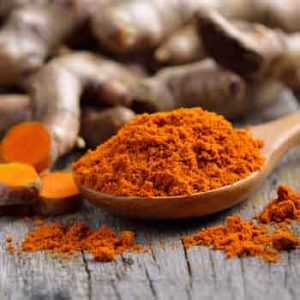
More evidence that low-calorie sweeteners are bad for your health
Studies show that artificial sweeteners can raise the risk of hypertension, metabolic syndrome, type 2 diabetes and heart disease, including stroke.

Natural Health News — Move over aloe there’s a new burn treatment in town.
In a recent research paper, the use of curcumin after burns and scalds were found to reduce the severity of the injury, lessen pain and inflammation, and improve healing with less than expected scarring, or even no scarring, of the affected skin.
Writing in the journal BioDiscovery, Dr. Madalene Heng, Clinical Professor of Dermatology at the David Geffen School of Medicine, in California, reports on her experience using curcumin gel on such injuries using three examples of patients treated after burns and scalds, and provides a detailed explanation why topical curcumin may work on such injuries.
She stresses that use of topical curcumin gel for treating skin problems, like burns and scalds, is very different, and appears to work more effectively, compared to taking curcumin tablets by mouth for other conditions.
When taken by mouth, curcumin can be poorly absorbed into the body, she says, and therefore might not work as well.
» Case reports show that a curcumin-containing gel may be an effective way of treating burns and scalds.
» A Californian doctor, who has been researching and using the gel for 25 years, suggests that topical curcumin is more effective than oral supplements because the gel preparation allows curcumin to penetrate the skin directly, switching off enzymes that delay healing.
A traditional remedy
Curcumin is an ingredient found in the common spice turmeric. Turmeric has been used as a spice for centuries in many Eastern countries and gives well known dishes, such as curry, their typical yellow-gold colour. The spice has also been used for cosmetic and medical purposes for just as long in these countries.
In recent years, the medicinal value of curcumin has been the subject of intense scientific studies, with publication numbering in the thousands, looking into the possible beneficial effects of this natural product on many kinds of affliction in humans.
A potent anti-inflammatory
Heng believes that the effectiveness of curcumin gel on the skin – or topical curcumin – is related to its potent anti-inflammatory activity. Based on studies that she has done both in the laboratory and in patients over 25 years, she believes the key to curcumin’s effectiveness on burns and scalds is that it is a natural inhibitor of an enzyme called phosphorylase kinase, which has many important functions, including its involvement in wound healing.
Wound healing is the vital process that enables healing of tissues after injury. The process, which begins with the release of phosphorylase kinase about 5 minutes after an injury, goes through a sequence of acute and chronic inflammatory events, during which there is redness, swelling, pain and then healing, often with scarring in the case of burns and scalds of the skin.
Dr. Heng says she uses curcumin gel for burns, scalds and other skin conditions as complementary treatment, in addition to standard treatment usually recommended for such conditions.

Please subscribe me to your newsletter mailing list. I have read the
privacy statement